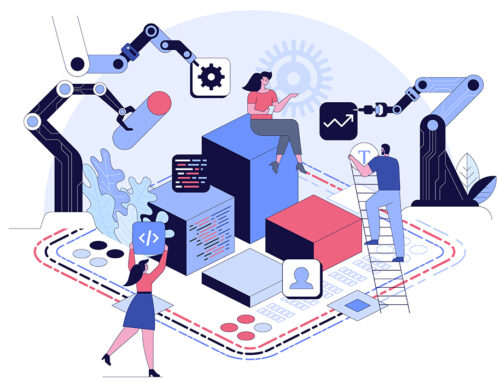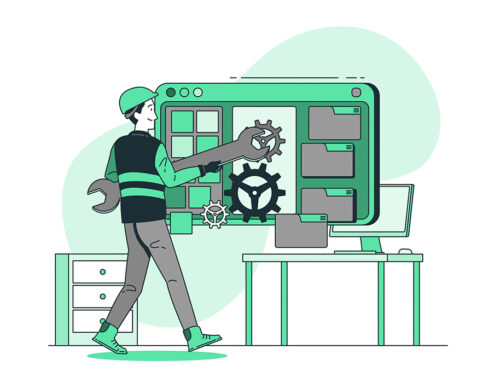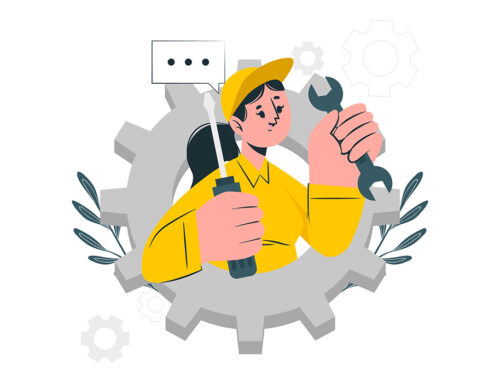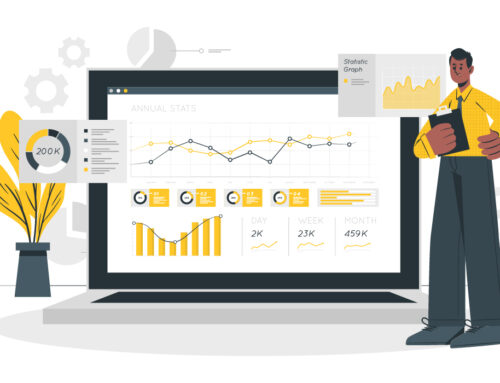Spare parts might not scream “sustainability,” but they’re fast becoming the frontlines of ESG innovation. From predictive maintenance to reverse logistics, discover how forward-thinking service leaders are greening their supply chains without compromising performance.
Author Kris Oldland | Copperberg

Photo: Freepik
Let’s be honest—when most people talk about sustainability, they’re picturing EVs, wind turbines, maybe recycled packaging. They’re not thinking about your average spare parts warehouse. But maybe they should be.
For manufacturers and service providers, the humble spare part is becoming the unlikely battleground for serious environmental progress. Why? Because everything from how a part is sourced, shipped, stored, and returned has ripple effects—not just on cost and performance, but carbon emissions, landfill waste, and long-term ESG targets.
And like it or not, those targets aren’t going away.
Sustainability and Operational Efficiency: Not Opposites Anymore
One of the biggest myths still floating around boardrooms? That sustainability and efficiency are somehow at odds. Claudine Bianchi, Chief Marketing Officer at Syncron, has heard it plenty—and she’s not buying it.
“The idea that companies must pick one or the other is outdated,” Bianchi says. “With the right tools and approach, businesses can operate efficiently, boost profits, and reduce their environmental impact”.
That’s not just wishful thinking. In many cases, efforts to cut waste and boost efficiency naturally lead to greener operations. Think smarter forecasting that cuts excess inventory. Or using predictive maintenance to reduce emergency air freight—one of the biggest carbon offenders in spare parts logistics.
And then there’s servitization—the model where manufacturers shift from selling products to delivering outcomes across the asset lifecycle. “Servitization can increase the lifetime value of goods and their lifespan,” Bianchi explains. “That’s good for the environment and the bottom line.”
Reverse Logistics: From Cost Center to Sustainability Hero
Another major shift? The rising role of reverse logistics as a profit opportunity—not just a sunk cost.
Historically, returns were an afterthought. A problem to be written off. But as Bianchi points out, companies are rethinking that narrative.
“By managing the flow of returned parts and equipment, companies can reduce landfill waste, reclaim potential losses, and extend product lifecycles.”
The trick, of course, is data. Businesses that invest in smart, data-driven return processes are reclaiming usable parts, reducing the need for virgin materials, and avoiding unnecessary disposal. That’s a triple win: environmental, operational, and financial.
Poorly managed returns, on the other hand, often mean perfectly functional components wind up in landfills—an avoidable failure on multiple fronts.
Tech to the Rescue: AI and Automation Make Sustainability Practical
So how do you scale sustainability in something as complex as spare parts planning? You lean on tech.
“Automation and AI are helping cut down on overstock and waste by taking the guesswork out of managing parts and inventory,” says Bianchi. And those same tools are also making it easier to make sustainable choices upstream.
That might mean algorithms that recommend the most eco-efficient supplier or route. Or it could be platforms that factor recyclability, materials provenance, and lifecycle emissions into procurement decisions.
We’re not talking about theoretical use cases either. These tools are already making a real impact—helping planners reduce both cost and carbon without drowning in spreadsheets.
Measuring What Matters: Tracking Environmental Impact
Metrics matter, especially when the C-suite and investors are watching. And while carbon footprint still grabs headlines, it’s far from the only KPI in play.
Companies are beginning to monitor:
- Recyclability scores across their parts catalogs
- Material sourcing transparency (e.g., conflict-free, post-consumer content)
- Lifecycle impact metrics tied to service models
- Return rates and refurbishment efficiency
The more granular the data, the more actionable the sustainability decisions become. But here’s the catch: measurement only works if it’s built into the tools teams actually use. That’s why we’re seeing more parts planning software embed ESG indicators directly into dashboards and workflows.
The ESG Balancing Act: Still a Work in Progress
Let’s not sugarcoat it, this shift isn’t frictionless. The push toward sustainable supply chains runs into plenty of real-world constraints.
One common pain point? Supplier limitations. It’s not always easy to find parts vendors who meet strict environmental criteria without blowing up the budget or the timeline.
And then there’s the internal resistance. Change management is tough in any procurement environment, let alone one that already runs on razor-thin margins. ESG alignment might win applause from investors, but it also demands patience, retraining, and cultural buy-in at the operational level.
Still, companies making it work aren’t doing it because it looks good in a report. They’re doing it because it’s starting to pay off—in loyalty, in compliance, and increasingly, in savings.
What’s Next? Five Sustainability Trends Worth Watching
So, where are we headed? Based on the insights from Bianchi and what we’re seeing across the industry, here are five emerging trends redefining the space:
- Reverse logistics as a core business function – Not just a recovery effort, but a structured, data-led revenue opportunity.
- Embedded ESG in planning tools – Think dashboards that flag parts with high carbon intensity or low recyclability.
- AI-driven inventory optimization – Reducing surplus while increasing service levels and lowering transport emissions.
- Servitization as a decarbonization strategy – Less about product sales, more about outcomes and lifecycle stewardship.
- Sustainability as a KPI, not a side quest – Measurable, reportable, and tied directly to business performance.
Final Thought: The Warehouse Is the New Frontline
If you’re still thinking sustainability is a branding exercise, it’s time to update your mental model. The choices being made in parts warehouses, sourcing departments, and return centers are now strategic decisions with long-term impact.
Spare parts may not be glamorous, but they’re ground zero for a quieter, more operational kind of climate action.
So the question for service leaders isn’t just “How green is our messaging?” It’s: “How sustainable is the supply chain under the hood?”
And more importantly, what are you doing about it?
About Copperberg AB
Founded in 2009, Copperberg AB is a European leader in industrial thought leadership, creating platforms where manufacturers and service leaders share best practices, insights, and strategies for transformation. With a strong focus on servitization, customer value, sustainability, and business innovation across mainly aftermarket, field service, spare parts, pricing, and B2B e-commerce, Copperberg delivers research, executive events, and digital content that inspire action and measurable business impact.
Copperberg engages a community reach of 50,000+ executives across the European service, aftermarket, and manufacturing ecosystem — making it the most influential industrial leadership network in the region.






























